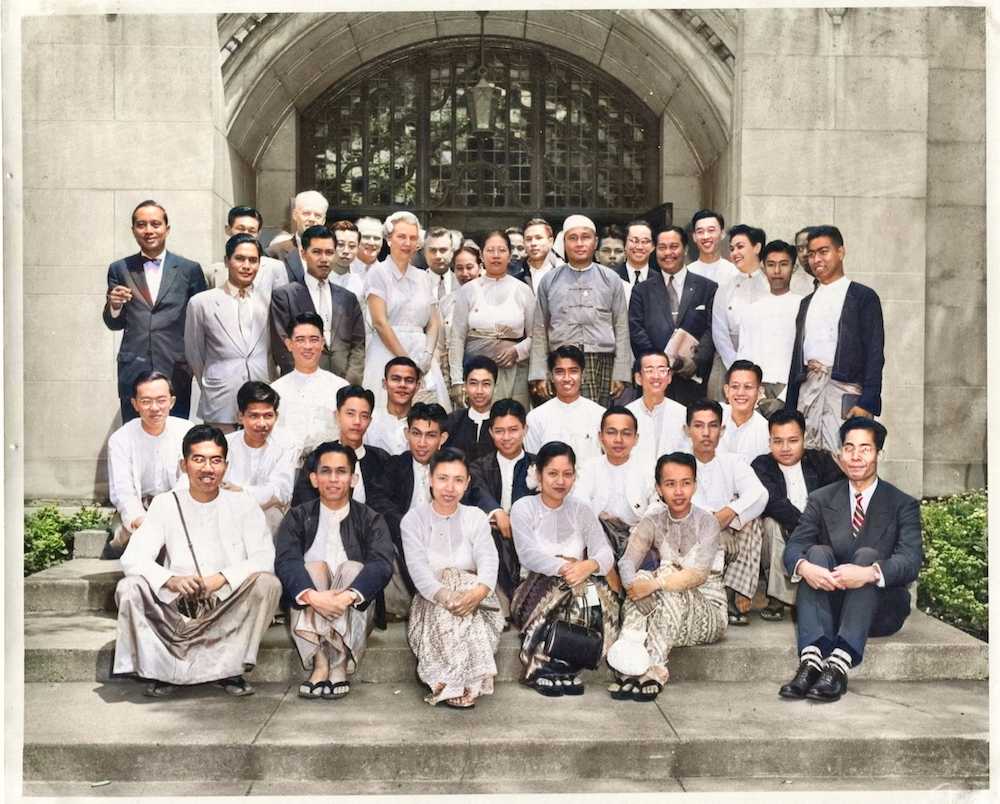
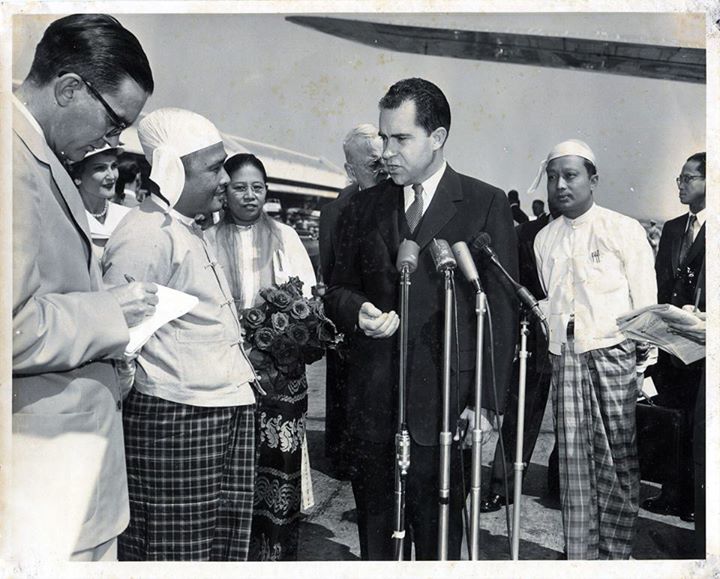
Vice President Richard Nixon welcoming U Nu to Washington (Patricia Nixon, Daw Mya Yi, Secretary of State John Foster Dulles, and U Thant in the background).
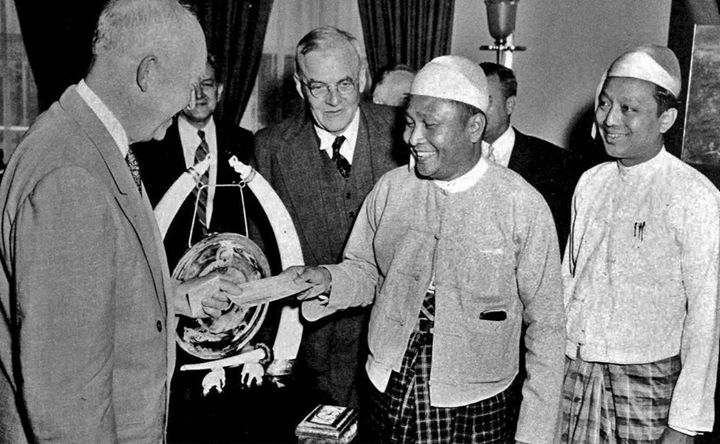
U Nu and U Thant with President Eisenhower at the White House.
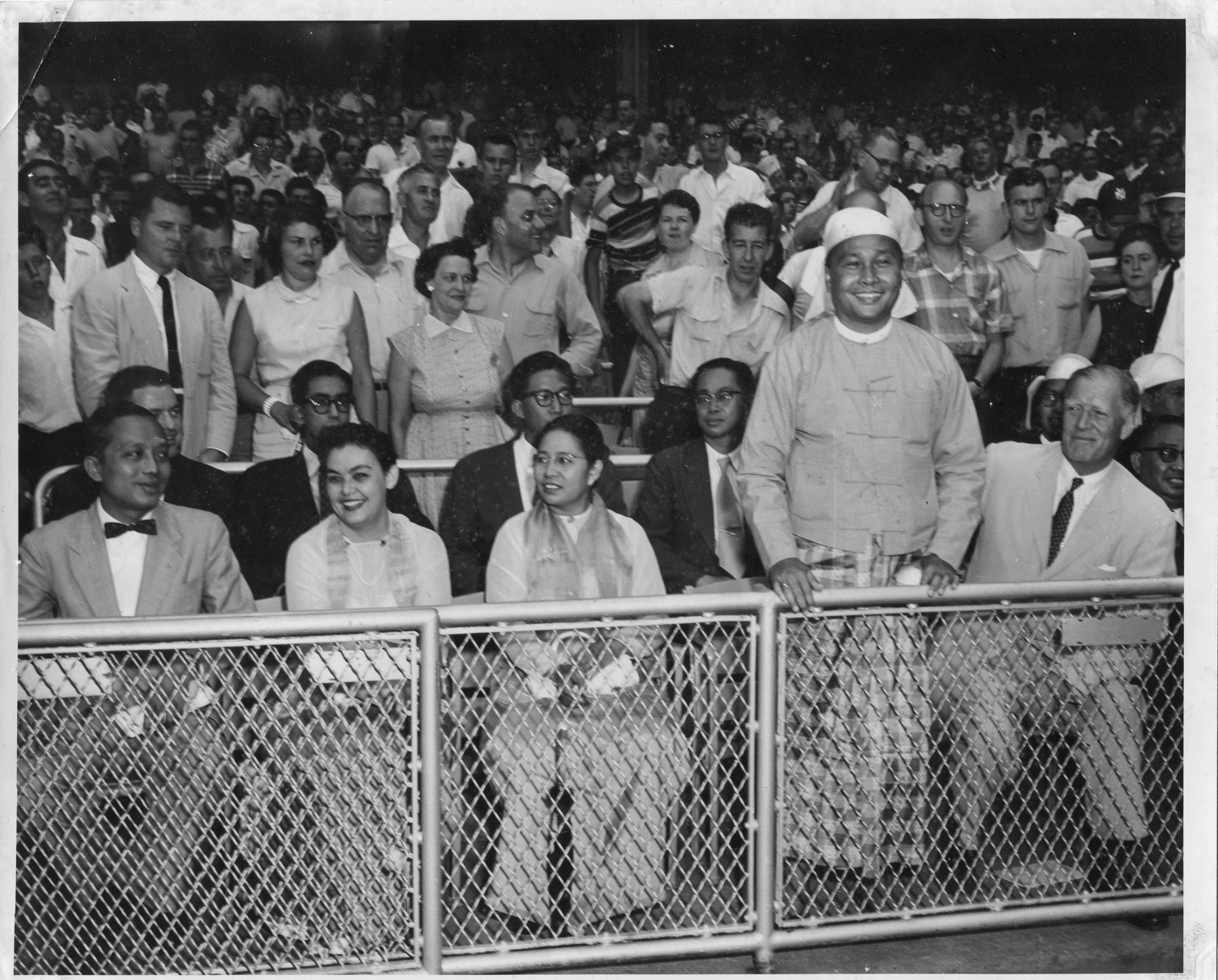
U Nu and U Thant with Daw Mya Yi and Mrs Eileen Barrington at a Yankees baseball game.

U Nu with Alfred Hitcock, Jimmy Stewart and Doris Day on the set of "The Man Who Knew Too Much".
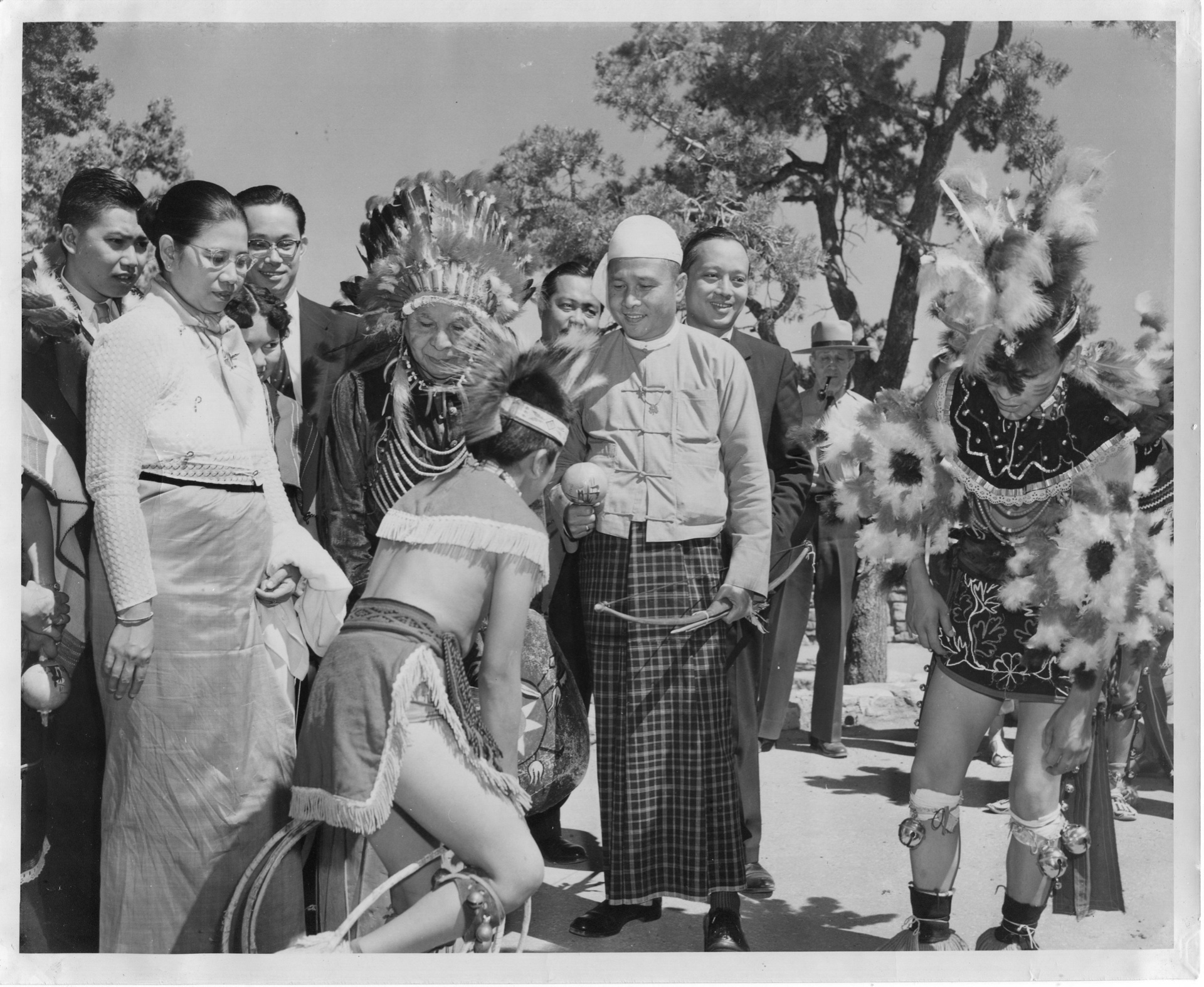
U Nu and party with Chief Po and other Hopi Native Americans at the Grand Canyon, Arizona.
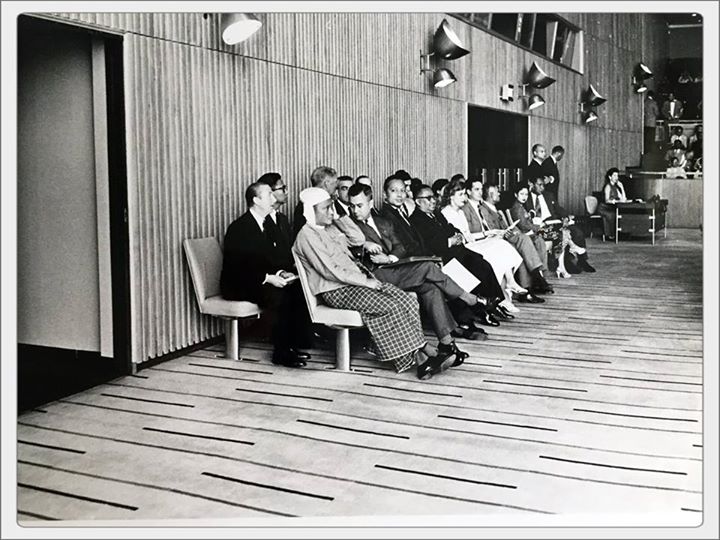
U Nu at the UN.
24 June 1955 - 16 July 1955
Prime Minister U Nu’s visit to the United States
room United States
people U Nu U Thant John Foster Dulles President Dwight Eisenhower
Prime Minister U Nu made an official visit to the United States and spent more than three weeks there, from 24 June to 16 July 1955. The tour included Washington D.C., New York, Ann Arbor (Michigan University), Knoxville (Tennessee), San Francisco, Los Angeles, and the Grand Canyon (Arizona). He was accompanied by his wife, Daw Mya Yi, U Thant (then Secretary, Prime Minister's Office), and Colonel Lwin (later head of Military Intelligence) as well as Burma's Ambassador to the US and UN, James Barrington, ICS (later Burma's Foreign Secretary) and his wife, Eileen Barrington. It was the first visit to America for both U Nu and U Thant, it was an incredible trip during which they experienced the United States - now richer than any other country in the world - at the height of the Cold War.
At the time, the Burmese government was trying to pursue a neutral foreign policy. Relations with the US had become strained due to American support for Kuomintang forces in the eastern Shan states and, in 1953, Burma had terminated all US aid. The trip was conducted in part to show that Burma was not siding with the Communist bloc, as some in the West feared.
This extract from Thant Myint-U's The River of Lost Footsteps, provided more details on the trip:
"It was the year Disneyland had opened its doors in Annaheim. Marlon Brando had won an Oscar for On the Waterfront, and I Love Lucy was enjoying its fifth fun-filled season. America was leading the world in practically everything, and the cold war was at its height. At his meeting with President Eisenhower U Nu presented the erstwhile Allied commander a check for five thousand dollars for the families of US soldiers killed in Burma during the Second World War. “Burma and America are in the same boat – we fight the same evils,” he said adroitly, and reminded his audiences in Washington of what he has said in Peking to Chairman Mao, that the Americans were a “brave and generous people.” At the National Press Club, U Nu pressed forward his vision of friendly neutrality, quoting George Washington’s Farewell Address on the need to steer clear of entangling foreign alliances, while also underlining Burma’s and America’s mutual commitment to a democratic way of life.
It was then on to the US Naval Academy at Annapolis, Philadelphia and Independence Hall, and finally the far West. In Pasadena, California, he was treated to a performance of his own play, The People Win Through. Both he and my grandfather were more than impressed with what they saw of the new superpower. At a Ford factory they watched in wonder as a car was assembled for them in less than a minute, and Knoxville, Tennessee, they listened awestruck as a waiter at a small hotel told them that he owned two cars, one for himself and one for his wife, and that his salary was more than that of the Burmese prime minister! Perhaps what impressed U Nu the most was what he saw of American charity. At San Francisco’s Mark Hopkins Hotel the hotel barber told him that he had raised and donated sixty-five thousand dollars for his church. U Nu was so moved he gave a hundred dollars of his own money to the same church.”
The first photograph shows U Nu and party meeting Burmese students at Michigan University; state scholars then at Michigan included engineering student Tyn Myint-U, future son-in-law of U Thant and father of Thant Myint-U, who had transferred there in 1953 from Rangoon University (second row seated, second from left). Photo credit: U Kyan Tyne Aung